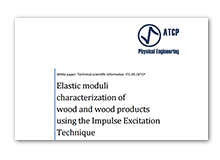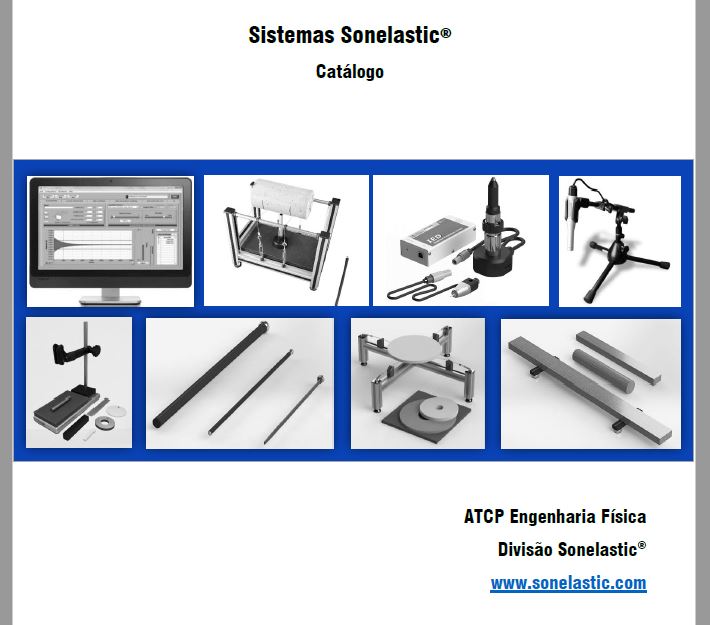Modulus of elasticity and Poisson's coefficient of wood
The tables below show the values of Young's modulus (modulus of elasticity) and Poisson's ratio at room temperature for woods and composite materials used in engineering.
They show average values of the Young's modulus (modulus of elasticity) for the compression parallel to the fibers for various wood species, and average Poisson's ratio values for several high and low density wood classes.
The properties are expressed in average values that may vary significantly depending on the processing and quality of the material. The exact values can be measured with the Sonelastic® Systems of non-destructive testing.
Wood
| Material | Modulus of elasticity | ||
| Wood species | GPa | 106 psi | |
| Angelim pedra (Hymenolobium petraeum): | 12.9 | 1.87 | |
| Casca grossa (Vochysia spp): | 16.2 | 2.35 | |
| Cupiúba (Goupia glabra): | 13.6 | 1.98 | |
| Eucalipto Citriodora (Eucalyptus citriodora): | 18.4 | 2.67 | |
| Eucalipto Grandis (Eucalyptus grandis): | 12.8 | 1.85 | |
| Eucalipto Maculata (Eucalyptus maculata): | 18.1 | 2.62 | |
| Eucalipto Urophylla (Eucalyptus urophylla): | 13.2 | 1.91 | |
| Ipê (Tabebuia serratifolia): | 18.0 | 2.61 | |
| Jatobá (Hymenaea spp): | 23.6 | 3.42 | |
| Cedro doce (Cedrella spp): | 8.06 | 1.17 | |
| Values for reference only. For exact values, characterize the material using Sonelastic® Systems. | |||
| Wood | |||
| Sample orientation | Poisson's ratio involved | Poisson's ratio for low-density wood | Poisson's ratio for high-density wood |
| Longitudinal: | ν_LT e ν_LR | 0.40 ± 0.05 | 0.43 ± 0.07 |
| Radial: | ν_RT e ν_RL | 0.25 ± 0.25 | 0.35 ± 0.30 |
| Tangential: | ν_TR e ν_TL | 0.20 ± 0.15 | 0.18 ± 0.15 |
The elastic moduli (Young's Modulus, Shear modulus and Poisson's ratio) and damping of composites can be accurately characterized by the non-destructive Sonelastic® Systems testing at room temperature and as a function of temperature and/or time. The knowledge of exact values is vital for the optimization of the material's use and for the reliability of simulations via finite elements. Elastic moduli and damping characterization are also employed in the engineering of new variations of these materials, such as panels and wooden boards.
This section of the website is a summary of an extract from the Technical Review ITC-ME/ATCP Elastic moduli: Overview and characterization methods, and Informativo Técnico-Científico ITC-05/ATCP: Caracterização dos módulos elásticos de madeiras utilizando a Técnica de Excitação por Impulso (TEI) - (*ptBr language).
References
ASSOCIAÇÃO BRASILEIRA DE NORMAS TÉCNICAS. Projeto de estruturas de madeira, NBR 7190. Rio de Janeiro, 1997. 107 p.
BODIG, J., JAYNE, B. A. Mechanics of wood and wood composites. Malabar (EUA), Krieger Publishing Company, 1993.


